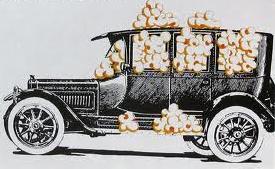Selling Cars is Like Popcorn
Many dealers are familiar with the phrase “popcorn cars”. This refers to cars that sell or “pop” quickly off the lot. The analogy between cars and popcorn however, may have more relevance today than ever in the past.
 The essential ingredients of popcorn are kernels, oil and fire. Anyone that has cooked popcorn knows that some kernels pop quickly while others more slowly. When most of the kernels are popped, there are always some left over that never popped.
The essential ingredients of popcorn are kernels, oil and fire. Anyone that has cooked popcorn knows that some kernels pop quickly while others more slowly. When most of the kernels are popped, there are always some left over that never popped.
Assume that your used vehicles are the kernels, the oil is your photos and descriptions and the fire is your pricing. It’s obvious that no matter how hot the flame, you can’t make popcorn with feed corn or without oil. In other words, if you have the wrong cars and poor marketing, bargain basement pricing will never be enough. Similarly, you can have the most desired vehicles and tremendous marketing skills, but if the vehicles are over priced it just won’t pop. The reality is, like popcorn, you have to have the right cars, great marketing and proper pricing.
Today, dealers have access to information that can help them pop every car perfectly every time. This new information is the number of search result page (SRP) hits and vehicle detail page (VDP) conversions. So what is an SRP and a VDP? If an on-line shopper searches for a 2009 F150 truck, they may get 5 pages of F150 trucks returned. Depending on the site, there are usually between 25 and 50 vehicles on a page. Assume that your dealership’s vehicle is on page 4 and the shopper only looks at vehicles on pages 1, 2 and 3. In this case, your dealership does not get credit for an SRP until and unless the shopper looks at page 4, the one that contains your vehicle. If the shopper who looks at page 4 drills down on your vehicle to see all the photos and description, then you get credit for a VDP. Keep in mind that on a third-party classified advertising site, nothing of any value occurs for a dealer until and unless the dealership gets a VDP view on their vehicle.
Now, consider an example of two vehicles in stock. After 15 days in inventory, the first car has 50 SRP hits and 15 VDP hits. The second car has 6 SRP hits and 0 VDP hits. What does this information tell the dealer that wants to pop these two vehicles off their lot?
The first vehicle that received 50 SRPs is one that is much more sought after than the second vehicle that received only 6 SRPs. Essentially, the first vehicle is gourmet corn, while the second vehicle is feed corn. The fact that the first vehicle converted SRPs to VDPs at the rate of 30% suggests that its photos and description are superb and the price is proper. The fact that the second vehicle didn’t convert any of the SRPs into VDPs suggests that the marketing and/or pricing is not right. Put another way, all the ingredients for popping this car off the lot are missing.
The question is whether the individual in your dealership that is responsible for popping cars off the lot has any awareness as to the SRP and VDP performance of their inventory. Ironically, SRP and VDP information for every car has been available for a long time on the back end of well-known sites like AutoTrader.com and Cars.com. Typically however, most used car managers are unaware that this information exists or its relevance to the desired outcome of moving cars quickly. Such information has traditionally been viewed as merely Internet metrics without much relevance to used vehicle production. In fact, the tracking of SRPs and VDPs on a per-vehicle basis is probably the most important used car management metric in the car dealership today. Knowing whether the vehicles in stock are ones that people are searching for, whether the photos and descriptions are differentiating and whether the current price is right are the essential ingredients for used car success.
